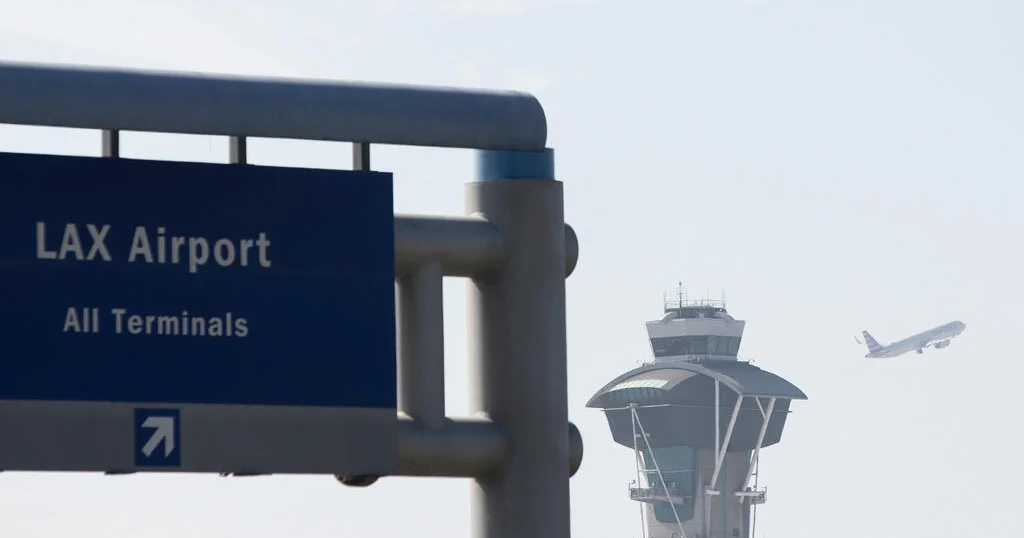The Federal Aviation Administration (FAA) recently announced significant cuts to air traffic capacity in response to the ongoing government shutdown, which has resulted in air traffic controllers working without pay. This measure is aimed at addressing shortages impacting a network of high-volume airports across the United States. The phased cuts will initiate on Friday morning and will include major airports like Los Angeles, Atlanta, and New York City, with a complete reduction of about 10% expected by next week.
| Article Subheadings |
|---|
| 1) Overview of FAA’s Capacity Cuts |
| 2) Impact on Major Airports |
| 3) Reasons Behind the Decision |
| 4) Future Implications |
| 5) Government Response and Public Reactions |
Overview of FAA’s Capacity Cuts
The FAA’s decision to cut air traffic capacity comes amid a government shutdown that has left many air traffic controllers without pay. Transportation Secretary Sean Duffy made the announcement, clarifying that these reductions are necessary to maintain safety and operational efficiency within the aviation system. The agency has designated 40 airports classified as “high-volume” to experience a 10% reduction in air traffic. Starting at 6 a.m. local time on Friday, local airports will begin to implement these cuts, moving toward the 10% target by the following week.
Impact on Major Airports
The capacity cuts will affect a variety of airports across the country, particularly targeting major hubs vital for both passenger travel and cargo transport. Notable airports on the list include Hartsfield-Jackson Atlanta International (ATL), Los Angeles International (LAX), New York’s John F. Kennedy International Airport (JFK), and Dallas/Fort Worth International Airport (DFW). This impact is expected to ripple across numerous cities and affect millions of travelers. For instance, Atlanta’s high traffic volume means that a 10% reduction could lead to significant delays, affecting not just local flights but also those connecting through ATL to other destinations.
Reasons Behind the Decision
The driving force behind the FAA’s decision is the shortage of air traffic controllers, a situation exacerbated by the ongoing government shutdown. With many employees working without compensation, recruitment and retention have become challenging, leading to fewer controllers available to manage air traffic flows. The FAA has historically prioritized safety above all else, and with controllers stretched thin, the agency opted for a strategic reduction in air traffic to mitigate potential safety issues.
Future Implications
The long-term implications of these capacity cuts could be far-reaching. Prolonged reductions may lead to a backlog of flights and exacerbate the already strained passenger experience in busy airports. The airline industry, which is still recovering from prior disruptions, faces both reputational and financial repercussions if delays become a frequent occurrence. The FAA’s actions may prompt airlines to reconsider their flight schedules and capacity planning, potentially resulting in higher ticket prices and reduced service in the future. Should the government shutdown persist, the situation could worsen, prompting further action from the FAA or pressure from stakeholders in the aviation sector.
Government Response and Public Reactions
Officials at the FAA have reiterated that safety is their top priority, stating that these measures, though unfortunate, are essential given the circumstances. Passengers and various stakeholders have expressed a mix of frustration and concern regarding the situation. Travelers are advised to stay informed about potential delays or cancellations and to plan their journeys accordingly. Industry experts suggest that airlines and government officials need to work in tandem to navigate this crisis and support the air traffic control workforce, potentially mitigating similar disruptions in the future.
| No. | Key Points |
|---|---|
| 1 | FAA announces 10% capacity cuts at 40 major airports due to government shutdown. |
| 2 | Cuts will start on Friday at 6 a.m. local time, fully implemented by next week. |
| 3 | Air traffic controller shortages are the primary reason for these temporary reductions. |
| 4 | Major airports affected include ATL, LAX, JFK, and DFW, impacting millions of travelers. |
| 5 | Public reaction mixed; concerns about delays and longer wait times at airports. |
Summary
As the government shutdown continues, the FAA’s decision to reduce air traffic capacity is a significant step towards ensuring safety amid controller shortages. With major airports experiencing cuts, travelers and the airline industry are bracing for potential delays and scheduling changes. The long-term implications of this decision will be closely monitored as stakeholders seek resolution to ensure safe and efficient air travel in the future.
Frequently Asked Questions
Question: Why are air traffic controllers working without pay?
Air traffic controllers are working without pay due to the ongoing government shutdown, which has temporarily halted funding for many federal agencies, including the FAA.
Question: How will these capacity cuts affect flight schedules?
The capacity cuts may lead to flight delays and cancellations, as airlines will have to adjust their schedules accordingly to comply with the reduced traffic levels.
Question: What measures can travelers take during this time?
Travelers should stay informed about possible delays or cancellations by checking their flight status and maintain flexibility in their travel plans while the situation evolves.
